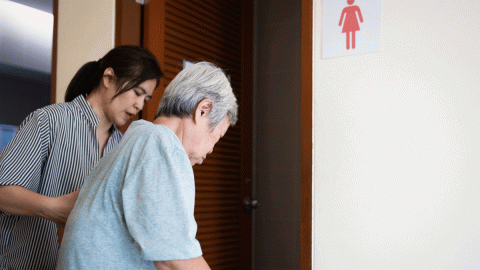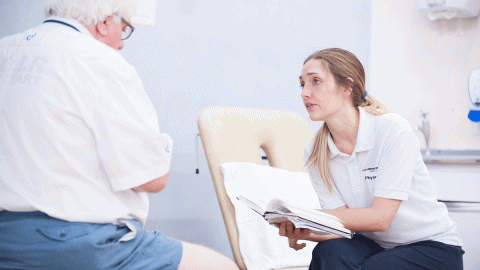Doing pelvic floor exercises, along with lifestyle changes, are very effective treatment methods for incontinence
What is a pelvic floor?
Pelvic floor muscles support your bladder and bowels within the pelvis and help to control when you open them or when you need to hold on. Both women and men have pelvic floor muscles.
Pelvic floor muscles attach all the way from your tailbone (coccyx) at the back, to your pubic bone at the front and also out towards the sitting bones within your bottom. They are the same kind of muscles that are found in your arms and legs which means that we can retrain them, but they have a more specialist job to do.
Pelvic floor exercises alongside lifestyle changes are the most effective treatment for incontinence. The good news is that pelvic floor muscle exercises are easy to perform and can be done anywhere.
How do I do find my pelvic floor muscles?
To do the exercises, get yourself into a comfortable position such as lying down with your knees bent or sitting. Imagine you are trying to stop yourself from passing wind and urine at the same time by tightening the back passage and pulling it upwards and forwards.
Keep breathing as you do the exercise and remember to fully relax after each one. At first you might find that you have to concentrate to do the exercise but as you get stronger they will be easier to do.
How do I do pelvic floor exercises?
If you want to strengthen your pelvic floor to prevent bladder and bowel leakage it is important to strengthen the muscles and to do the exercises three times a day. Once the muscles are strong continue to do them once a day in order to keep them toned and strong.
Try holding for up to ten seconds, repeat this ten times, then try ten really quick squeezes. Increase the routine so that you can complete this three times day and continue for up to six months. As you improve you may want to try them in harder positions such as standing, walking, squatting or during general exercise. You may also want to try to prepare for any activity where you may leak by tightening your pelvic floor muscles first.
Pelvic floor exercise apps
There are many apps you can download onto your smart phone to help you remember to do your pelvic floor exercises or to help you build an exercise programme.
- NHS Squeezy
- My Pelvic Floor Fitness
- PFM - for iOS or Android
- Easy Kegel
If you are unsure how to do these exercises then you should speak to a physiotherapist who specialises in this area.
Specialist physiotherapists can help you with pelvic floor dysfunction caused by pregnancy and childbirth, or other issues including incontinence and pelvic pain.
Your GP will be able to advise you where your local specialist works and complete an NHS referral.







































